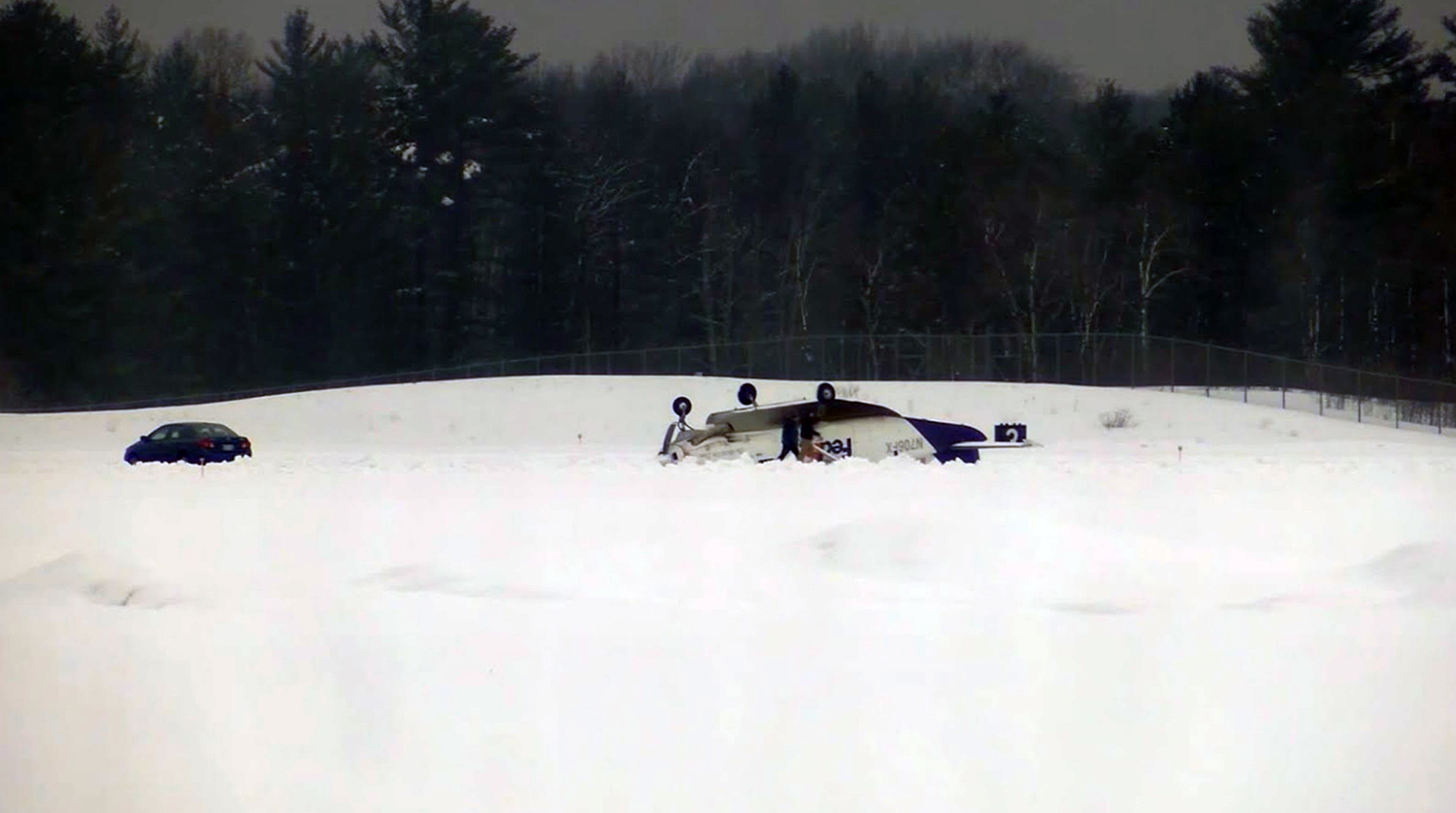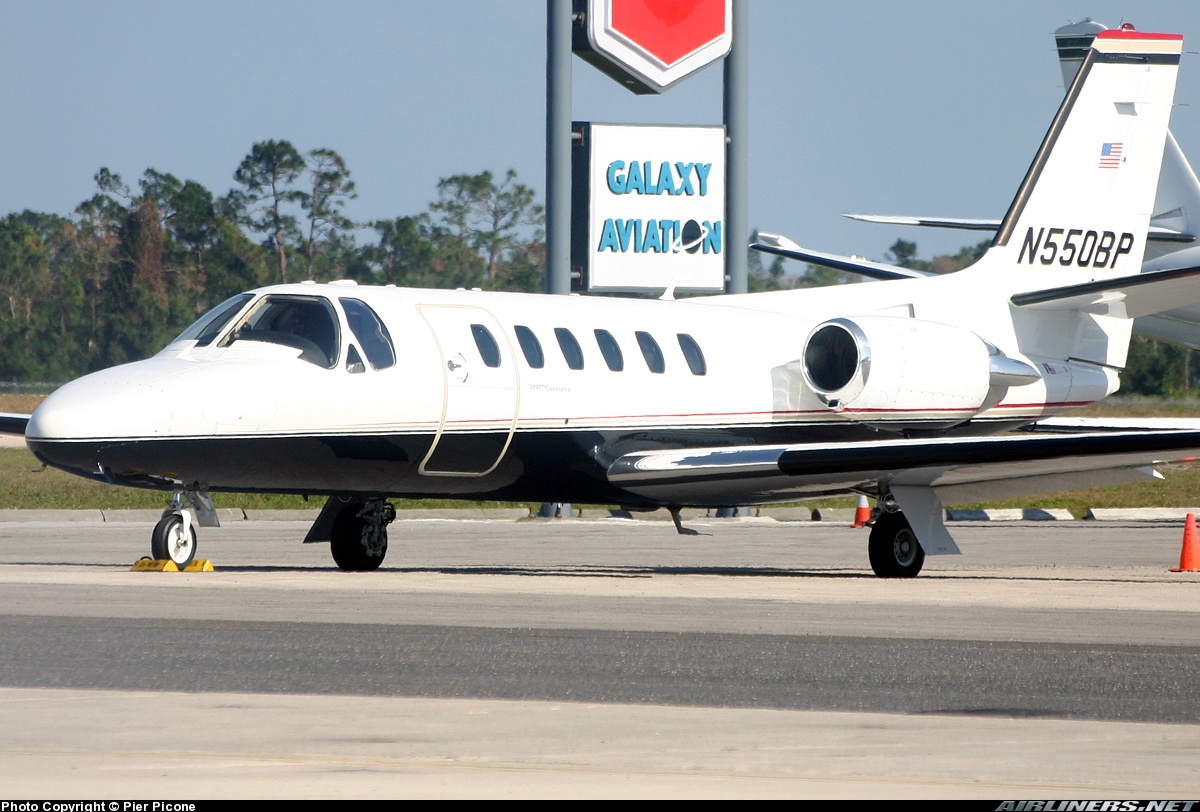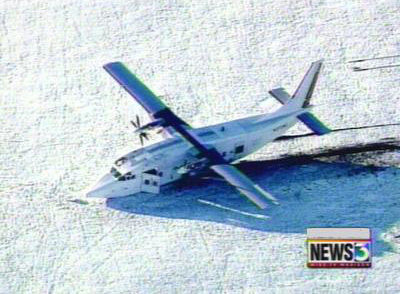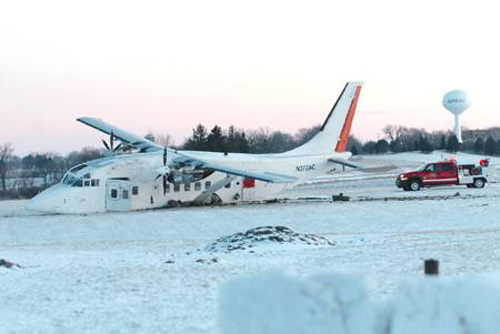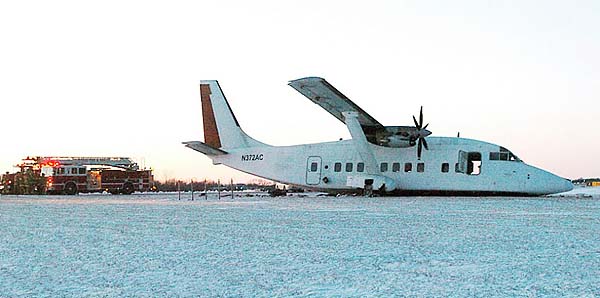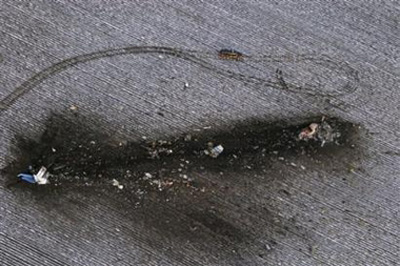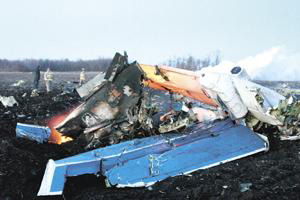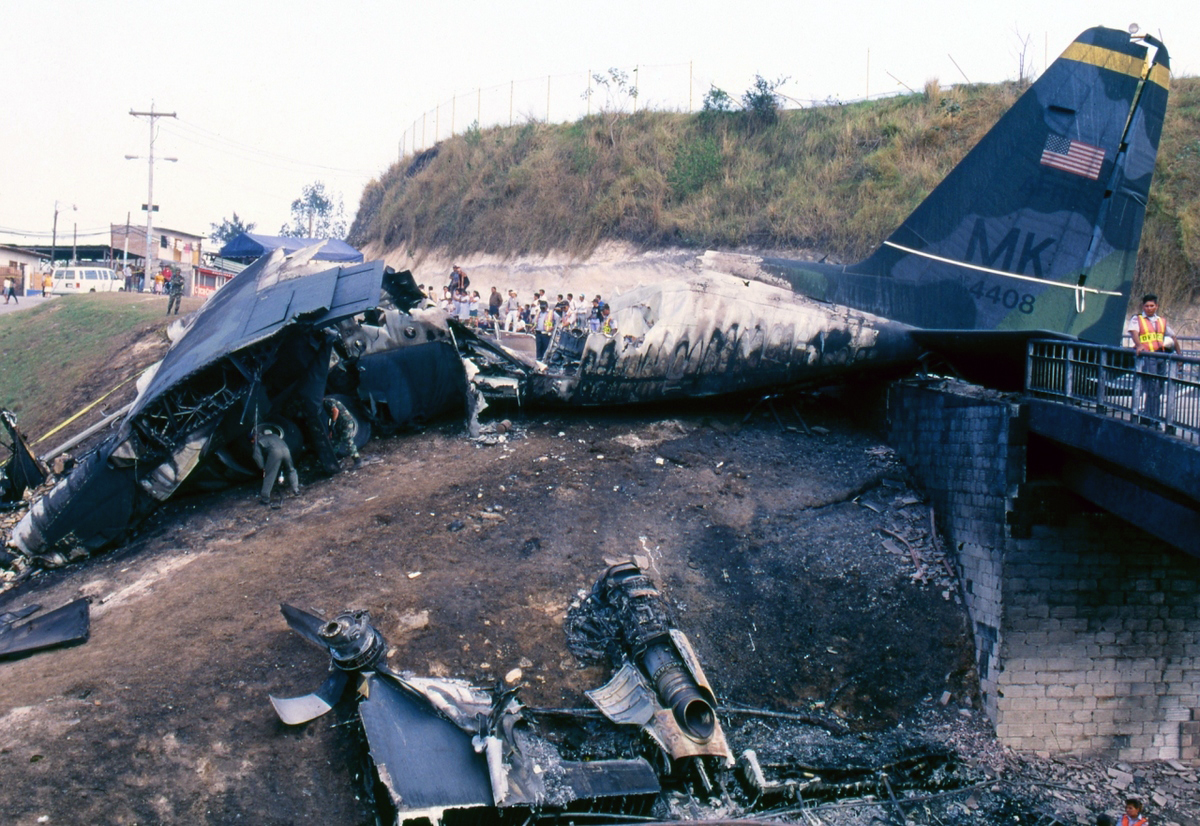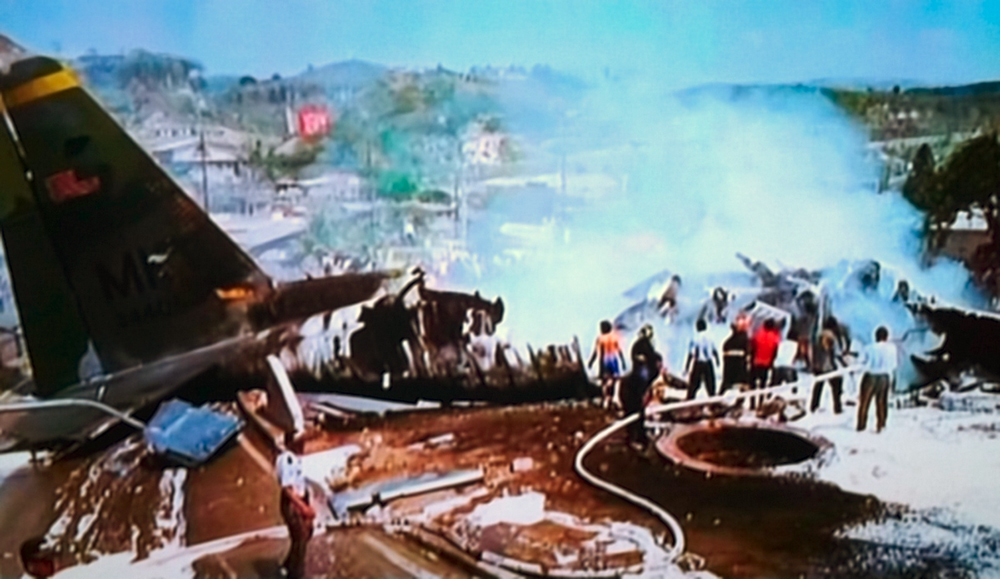Crash of a Cessna 208B Super Cargomaster in Rhinelander
Date & Time:
Mar 5, 2020 at 0815 LT
Registration:
N706FX
Survivors:
Yes
Schedule:
Milwaukee – Rhinelander
MSN:
208B-0426
YOM:
1995
Flight number:
FDX8312
Crew on board:
1
Crew fatalities:
Pax on board:
0
Pax fatalities:
Other fatalities:
Total fatalities:
0
Captain / Total hours on type:
3684.00
Aircraft flight hours:
11458
Circumstances:
The pilot reported that, upon reaching the decision altitude on a GPS instrument approach, he saw the runway end identifier lights and continued the approach. Shortly after, the lights disappeared and then reappeared. He continued the approach and landing thinking the airplane was lined up with the runway by using the runway edge lights for reference. Upon touching down about 225 ft left of the runway, the airplane dug into snow and flipped over, which resulted in substantial damage to the wings and tail. The pilot reported that there were no preaccident mechanical malfunctions or failures with the airplane that would have precluded normal operation.
Probable cause:
The pilot's improper decision to continue an instrument approach to landing following a loss of visual reference with the runway, which resulted in the airplane touching down left of the runway in snow and flipping over.
Final Report:
